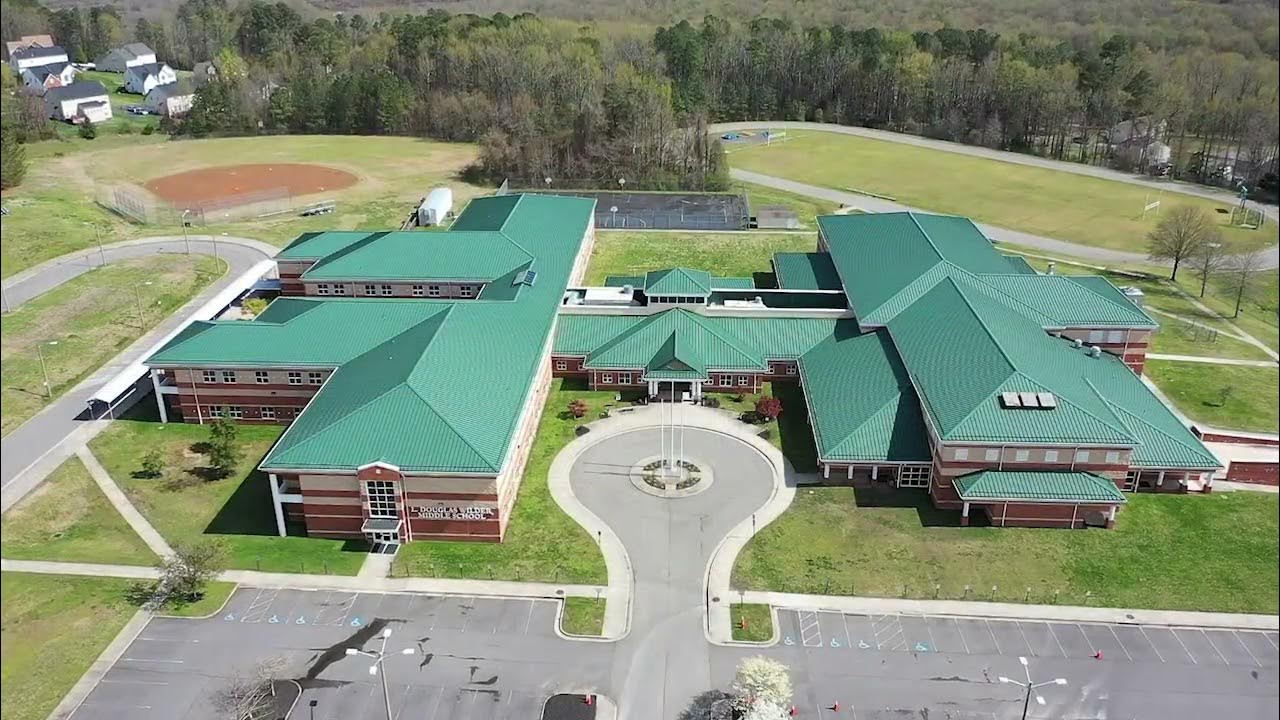Home>diy>Planning & Engineering>How To Apply For A Zoning Variance


Planning & Engineering
How To Apply For A Zoning Variance
Modified: October 20, 2024
Learn how to apply for a zoning variance with expert guidance from our planning engineering team. Navigate complex regulations and streamline the process for your development projects.
(Many of the links in this article redirect to a specific reviewed product. Your purchase of these products through affiliate links helps to generate commission for Storables.com, at no extra cost. Learn more)
Introduction
When it comes to real estate development or renovation projects, ensuring compliance with local zoning regulations is crucial. However, there may be instances where a project does not fully meet the existing zoning requirements. This is where a zoning variance comes into play.
A zoning variance is a legal permission granted by the local government or zoning board that allows a property owner to deviate from specific zoning regulations. It provides an opportunity to modify certain aspects of the project while still maintaining overall community standards and goals.
In this article, we will discuss the process of applying for a zoning variance and provide tips on how to navigate through the application process successfully.
Key Takeaways:
- Understanding local zoning regulations and gathering comprehensive documentation are crucial steps in successfully applying for a zoning variance. Thorough research and clear evidence strengthen your case and increase the likelihood of approval.
- Whether drafting a persuasive request or attending the zoning board meeting, careful preparation and confidence are essential. Professional assistance can provide expertise and guidance, enhancing the chances of a successful variance application.
Understanding Zoning Variance
Before diving into the application process, it’s important to have a clear understanding of what a zoning variance entails. Zoning regulations are put in place to ensure that land use within a specific area is consistent and promotes the well-being of the community. These regulations dictate things such as the allowed land use, building height, setbacks, parking requirements, and more.
However, there may be situations where strict adherence to these regulations would result in undue hardship or prevent reasonable use of the property. This is where a zoning variance comes into play. A variance allows a property owner to request an exception to certain zoning regulations, provided they can demonstrate that there are unique circumstances specific to their property that warrant the variance.
It’s important to note that a variance is not meant to be easily obtained. Local zoning boards carefully review each request to ensure that it complies with the intent of the zoning regulations while still addressing the unique circumstances of the property owner.
There are typically two types of zoning variances:
- Use Variance: This type of variance allows a property owner to use the land in a way that is not typically permitted by the zoning regulations. For example, if the zoning regulations prohibit the establishment of a commercial business in a residential area, a use variance could be sought to allow the property owner to operate a small business from their home.
- Dimensional Variance: This type of variance pertains to the physical requirements of a project, such as setbacks, height limits, or parking requirements. A dimensional variance may be necessary if a property owner wants to construct a building that exceeds the maximum height limit specified in the zoning regulations.
Understanding the type of variance you need is essential as it will impact the documentation, reasoning, and evidence required in your application.
Researching Local Zoning Regulations
Before proceeding with your zoning variance application, it’s important to thoroughly research and understand the local zoning regulations that govern your property or project area. This step is crucial as it will help you identify any potential conflicts or areas where a variance might be needed.
Here are some steps to follow when researching local zoning regulations:
- Consult the Zoning Code: Start by obtaining a copy of the zoning code or ordinance for your jurisdiction. This document outlines the specific regulations and requirements for land use in your area. The zoning code will provide details about zoning districts, allowed uses, setbacks, building heights, parking requirements, and more.
- Review Zoning Maps: Study the zoning maps of your local area to determine the specific zoning district in which your property is located. Different areas may have different regulations, so it’s important to understand the specific requirements that apply to your property.
- Identify Applicable Regulations: Once you have a good understanding of the zoning code and zoning district, identify the regulations that may affect your project. This could include restrictions on building height, setbacks from property lines, parking requirements, or even specific use restrictions.
- Understand Variance Criteria: Familiarize yourself with the criteria and standards for granting a zoning variance in your jurisdiction. Each local government or zoning board will have its own set of criteria that must be met to obtain a variance. This information will be helpful when preparing your application and presenting your case.
- Reach out to the Zoning Department: If you have any questions or need clarification on any aspect of the zoning regulations, don’t hesitate to contact your local zoning department. They can provide you with guidance and answer any specific questions you may have about your project.
Thorough research of local zoning regulations is crucial to ensure that your zoning variance application is accurate and aligned with the requirements set forth by the local authorities. It will also demonstrate your commitment to complying with the regulations and your awareness of the impact your project may have on the surrounding community.
Preparing the Application
Once you have thoroughly researched the local zoning regulations and determined that a zoning variance is necessary for your project, it’s time to start preparing your application. The application is a formal document that presents your case to the zoning board and provides all the necessary information to support your request for a variance.
Here are some key steps to follow when preparing your zoning variance application:
- Review Application Requirements: Carefully review the application requirements provided by the zoning board or local government. These requirements will outline what information, documentation, and fees are needed for your application. It’s important to adhere to these requirements to ensure a smooth review process.
- Fill Out Application Form: Obtain the official application form and fill it out completely and accurately. Be sure to provide all the necessary details about the property in question, your contact information, and the type of variance you are seeking (use variance or dimensional variance).
- Include a Cover Letter: Consider including a cover letter with your application. This letter should provide a brief overview of your project, explain why the variance is necessary, and highlight any unique circumstances or hardships that warrant the variance. It’s an opportunity to make a persuasive case for your request.
- Provide Detailed Project Description: Include a detailed description of your project, outlining its purpose, scope, and design. Explain how the variance will allow you to achieve the desired outcome while still maintaining the intent of the zoning regulations.
- Supporting Evidence and Documentation: Gather any supporting evidence and documentation that strengthens your case. This may include surveys, architectural plans, photographs, expert reports, or any other relevant documents that demonstrate the need for the variance and the potential benefits it will bring to the community.
- Submit Required Fees: Be prepared to pay any required fees associated with your application. These fees help cover the administrative costs of processing and reviewing your application.
It’s essential to ensure that your application is complete, organized, and well-presented. An accurately prepared application will increase your chances of success and demonstrate your professionalism and commitment to meeting the zoning board’s requirements.
Gathering Necessary Documentation
When applying for a zoning variance, it’s important to provide the zoning board with all the necessary documentation to support your case. This documentation serves as evidence to demonstrate why a variance is needed and how it will not adversely impact the surrounding community. Here are some key documents you may need to gather:
- Property Deed: Provide a copy of the property deed or title that proves your ownership or legal right to the property. This document establishes your authority to seek a zoning variance.
- Survey and Site Plan: Include a survey or site plan that illustrates the current layout of the property, including buildings, structures, and setbacks. This plan will help the zoning board visualize your project and its relationship to neighboring properties.
- Architectural Plans: If you’re proposing any changes or additions to the existing structures, include detailed architectural plans that clearly depict the proposed changes. These plans should indicate dimensions, materials, and any other pertinent details.
- Photographs: Submit photographs that depict the current condition of the property and any areas that will be affected by the proposed project. These visuals can help the zoning board understand the context and potential impacts of your project.
- Expert Reports: If you’ve consulted with experts such as engineers, environmental consultants, or traffic specialists, include their reports to support your case. These reports should address any potential impacts or concerns related to the variance.
- Supporting Studies or Research: Include any studies or research that demonstrates the need for the variance and its potential benefits. For example, if your project will contribute to economic development or improve the overall livability of the community, provide data or studies that support these claims.
- Letters of Support: If applicable, gather letters of support from neighbors, community organizations, or other stakeholders who endorse your project and believe that the variance is justified. These letters can help showcase community support for your proposal.
- Any Required Permits or Approvals: If there are any other permits or approvals required for your project, such as environmental permits or building permits, include copies of those documents to demonstrate your compliance with other regulations.
Remember to organize your documentation in a clear and logical manner, making it easy for the zoning board to review and understand. Label each document appropriately and create a comprehensive package that supports your request for a zoning variance.
When applying for a zoning variance, be sure to thoroughly research the specific requirements and procedures set forth by your local zoning board. Understanding the process and providing all necessary documentation will increase your chances of a successful application.
Read more: How To Apply Astro Turf
Drafting a Variance Request
Once you have gathered all the necessary documentation and have a clear understanding of the local zoning regulations, it’s time to draft your variance request. The variance request is a formal document that clearly articulates the reasons why you are seeking a variance and presents a compelling case to the zoning board. Here are some key steps to follow when drafting your request:
- Start with an Introduction: Begin your request with a brief introduction that provides an overview of your project and the purpose of the variance. Clearly state the specific zoning regulations that you are seeking a variance from.
- State the Unique Circumstances: Explain the unique circumstances or hardships that warrant the variance. This could include physical limitations of the property, topographical challenges, historical significance, or any other factors specific to your project that make strict compliance with the regulations impractical or unreasonable.
- Address the Intent of the Regulations: Demonstrate how your proposed project aligns with the general intent of the zoning regulations, despite not meeting the specific requirements. Explain how the variance will still maintain the overall goals and objectives of the zoning regulations and contribute positively to the community.
- Discuss Potential Impacts: Address any potential impacts that your project might have on the surrounding area, such as noise, traffic, or aesthetics. Show that you have considered these impacts and provide mitigation measures or solutions to minimize any negative effects.
- Present Supporting Evidence: Use the documentation you gathered earlier to support your request. Reference specific documents, studies, or expert reports that emphasize the need for the variance and demonstrate its feasibility and benefits.
- Highlight Community Benefits: Clearly articulate the benefits that your project will bring to the community, beyond the immediate property. This could include economic development, job creation, preservation of historic features, or improved quality of life for residents. Show how the variance aligns with the overall well-being of the community.
- Summarize and Conclude: End your request by summarizing the key points and reiterating the reasons why the variance should be granted. Convey your appreciation for the time and consideration of the zoning board and express your commitment to fulfilling any conditions or requirements they may have.
Remember to proofread your variance request thoroughly for clarity, coherence, and grammar. Ensure that it effectively conveys your message and presents a strong case for why the variance should be granted. A well-crafted and persuasive request increases your chances of success when presenting your case to the zoning board.
Hiring Professional Help (if needed)
Applying for a zoning variance can be a complex and time-consuming process, especially if you are unfamiliar with local zoning regulations or have limited experience in navigating through the application process. In such cases, hiring professional help can be advantageous and increase your chances of a successful variance application. Here are some reasons why you may consider hiring professional assistance:
- Expertise and Knowledge: Professionals such as land use attorneys or zoning consultants have in-depth knowledge and experience in dealing with zoning regulations. They understand the intricacies of the process, are well-versed in local zoning laws, and can guide you through the application process with their expertise.
- Navigating Complexities: Zoning regulations can be complex and often require a thorough understanding of legal jargon and technical aspects. Hiring professionals who are familiar with these complexities can help you navigate through the process more efficiently and effectively.
- Maximizing Chances of Approval: Professionals can review your project and assess its compliance with zoning regulations. They can identify any potential issues or red flags that may hinder your application and provide guidance on how to mitigate them. Their expertise can significantly increase your chances of obtaining the variance.
- Preparing a Stronger Application: Professionals can assist in preparing a comprehensive and well-organized application package. They can gather the required documentation, draft persuasive arguments, and present your case in a compelling manner. This can help ensure that your application meets all the necessary requirements and has a stronger chance of approval.
- Representation and Advocacy: Professionals can act as your advocate during the variance application process. They can represent you at zoning board meetings, present your case, and address any concerns or questions raised by the board. Their representation can add credibility and expertise to your application.
- Saving Time and Effort: Hiring professionals can save you valuable time and effort. They can handle the various tasks involved in the application process, allowing you to focus on other aspects of your project. They can also ensure that all deadlines are met and that your application is submitted in a timely manner.
While hiring professional help may come at a cost, the benefits they provide in terms of expertise, efficiency, and increased chances of success can outweigh the investment. It’s important to carefully consider your specific situation and evaluate whether professional assistance would be beneficial for your zoning variance application.
Submitting the Application
After careful preparation, it’s time to submit your zoning variance application. This step is crucial, as it officially initiates the review process by the zoning board. Here are some key steps to follow when submitting your application:
- Double-Check Application Requirements: Before submitting, review the application requirements once again to ensure that you have included all the necessary documents, fees, and information. Missing or incomplete requirements can delay the review process or even result in rejection of your application.
- Make Copies of the Application: Create copies of the entire application package for your records. This will serve as your backup and reference throughout the review process.
- Submit the Application: Depending on the instructions provided by the zoning board, submit your application either electronically or in person at the designated office. If submitting in person, ensure that you have all the required documents organized and ready for submission.
- Obtain Proof of Submission: If submitting in person, ask for a receipt or proof of submission that confirms the date and time of your application. This will be useful if there are any questions or discrepancies later on.
- Promptly Pay the Required Fees: If there are any fees associated with your application, ensure that you submit the payment promptly. Late or incomplete payments can cause delays in the review process.
- Keep Track of the Review Timeline: Take note of the expected timeline for the review process. The zoning board should provide an estimate of how long it will take to process your application. This will help you manage your expectations and plan accordingly.
- Communicate Any Changes or Updates: If there are any changes or updates to your project or contact information during the review process, promptly inform the zoning board. It’s important to maintain open lines of communication and keep the board informed throughout the process.
- Patience and Follow-Up: Once your application is submitted, exercise patience as the zoning board reviews it. The review process can vary in length depending on the complexity of the application and the workload of the board. If there are delays or if you have any concerns, don’t hesitate to follow up with the zoning board for updates.
By following these steps and submitting a complete and accurate application, you will initiate the review process and move closer to obtaining your zoning variance. Stay proactive and engaged throughout the process, and be prepared to provide any additional information or clarification requested by the zoning board.
Attending the Zoning Board Meeting
Attending the zoning board meeting is a crucial step in the zoning variance application process. It provides an opportunity for you to present your case directly to the zoning board members and address any questions or concerns they may have. Here are some important considerations when attending the zoning board meeting:
- Review the Meeting Agenda: Prior to the meeting, review the meeting agenda to determine when your variance application will be discussed. This will help you plan accordingly and ensure that you are present when your case is brought up.
- Prepare a Presentation: Prepare a concise and persuasive presentation to summarize your project and the reasons why the variance should be granted. Highlight the unique circumstances, community benefits, and mitigation measures you have in place to address any potential impacts.
- Be Familiar with the Application: Familiarize yourself with the details of your application and any supporting documents you submitted. This will allow you to confidently respond to any questions or comments raised by the zoning board members.
- Arrive Early: Arriving early at the meeting will give you time to familiarize yourself with the surroundings and settle any nerves. It also allows you to engage in informal conversations with zoning board members or other attendees, which can help establish rapport.
- Follow Meeting Etiquette: During the meeting, adhere to proper meeting etiquette. Be respectful, attentive, and responsive. Listen carefully to the comments and questions raised by the zoning board members and address them thoughtfully.
- Present a Confident and Professional Demeanor: Project confidence and professionalism when presenting your case. Maintain good eye contact, speak clearly and articulately, and be prepared to support your arguments with relevant evidence or documentation when needed.
- Answer Questions Honestly and Transparently: Be prepared to answer questions from the zoning board members honestly and transparently. If you are unsure of an answer, it is better to admit it and offer to follow up with more information later.
- Address Concerns Empathetically: If the zoning board raises any concerns about your project, address them empathetically. Show that you have considered their concerns and present any additional evidence or mitigation measures that may alleviate their worries.
- Follow the Board’s Decision-Making Process: The zoning board will review your application and make a decision based on their criteria and the information presented at the meeting. Respect their decision, whether it is in favor of or against your variance request.
- Stay Engaged and Responsive: After the meeting, stay engaged and responsive to any follow-up requests or conditions set forth by the zoning board. Timely compliance with any requirements is crucial to ensure the successful outcome of your zoning variance application.
Attending the zoning board meeting allows you to personally advocate for your project and address any concerns that the board may have. By being prepared, confident, and respectful, you can make a compelling argument in favor of your zoning variance request and increase the likelihood of a positive outcome.
Read more: How To Apply Fertilizer To Plants
Conclusion
Applying for a zoning variance can be a complex and involved process, but with careful planning and preparation, you can navigate through it successfully. Understanding the local zoning regulations, gathering the necessary documentation, and submitting a well-crafted application are key steps towards obtaining a zoning variance.
Researching the local zoning regulations provides you with a solid foundation and helps you identify any potential conflicts or areas where a variance may be needed. By familiarizing yourself with the specific requirements and criteria set forth by the zoning board, you can tailor your application to meet their expectations.
Gathering the necessary documentation supports your case and demonstrates the need for the variance. Providing clear and comprehensive evidence, such as surveys, architectural plans, expert reports, and community support letters, helps strengthen your application and showcases the benefits your project will bring to the community.
Drafting a variance request that clearly outlines the unique circumstances, addresses the intent of the regulations, and highlights community benefits is crucial in presenting a persuasive case to the zoning board. Taking the time to craft a well-organized, cohesive, and compelling request increases your chances of receiving approval for your variance.
If needed, hiring professional help can provide expertise and guidance throughout the application process. Professionals experienced in dealing with zoning regulations can assist in preparing the application, maximizing your chances of approval, and saving you time and effort during this complex journey.
Attending the zoning board meeting is your opportunity to present your case directly to the board members. By prepared, confident, and responsive during the meeting, you can address any questions or concerns raised by the board and further advocate for your project.
In conclusion, applying for a zoning variance requires careful research, preparation, and execution. By understanding the local regulations, gathering necessary documentation, drafting a persuasive request, and either seeking professional help or attending the zoning board meeting confidently, you can increase your chances of obtaining the zoning variance you need for your project.
Remember, the zoning variance process may vary from jurisdiction to jurisdiction, so it’s important to consult with local authorities and professionals familiar with your specific area. With dedication and perseverance, you can navigate through the process and achieve your desired outcome.
Frequently Asked Questions about How To Apply For A Zoning Variance
Was this page helpful?
At Storables.com, we guarantee accurate and reliable information. Our content, validated by Expert Board Contributors, is crafted following stringent Editorial Policies. We're committed to providing you with well-researched, expert-backed insights for all your informational needs.













0 thoughts on “How To Apply For A Zoning Variance”